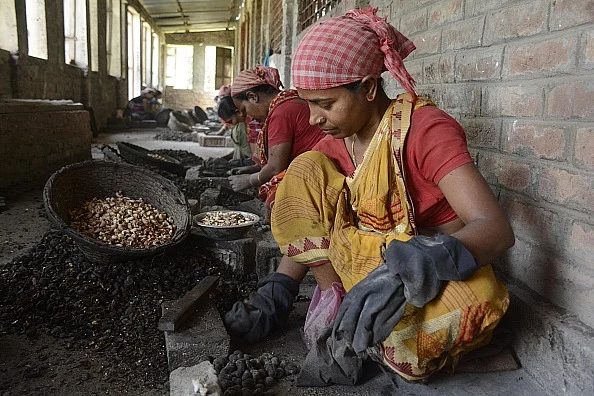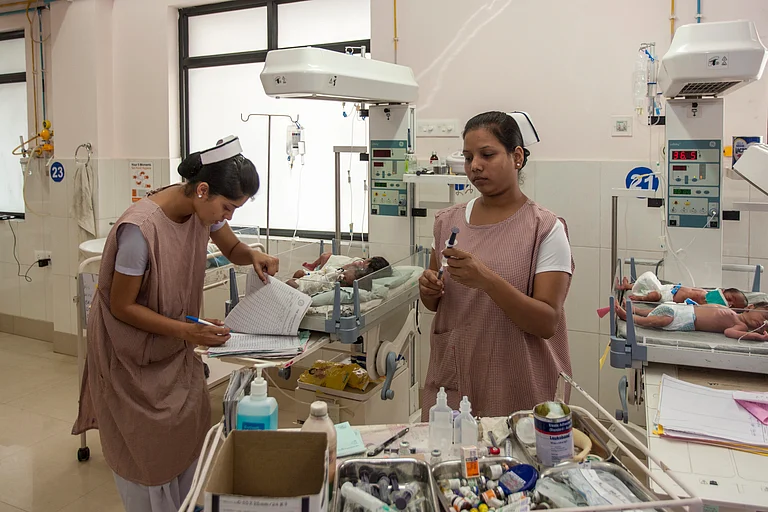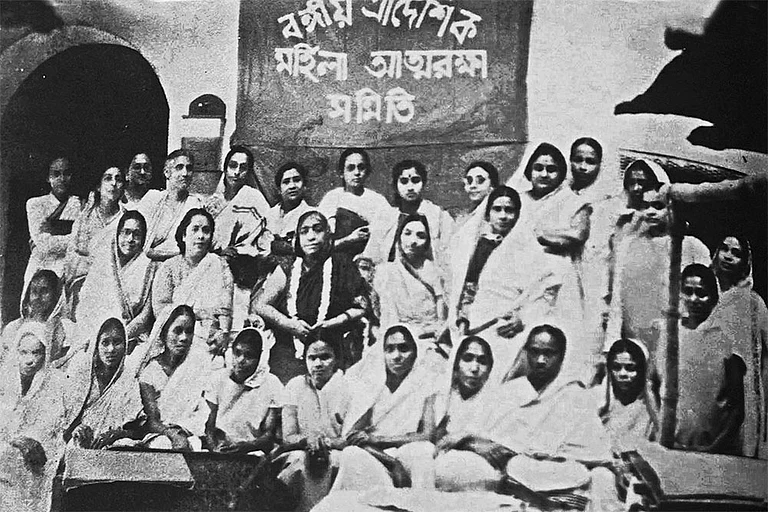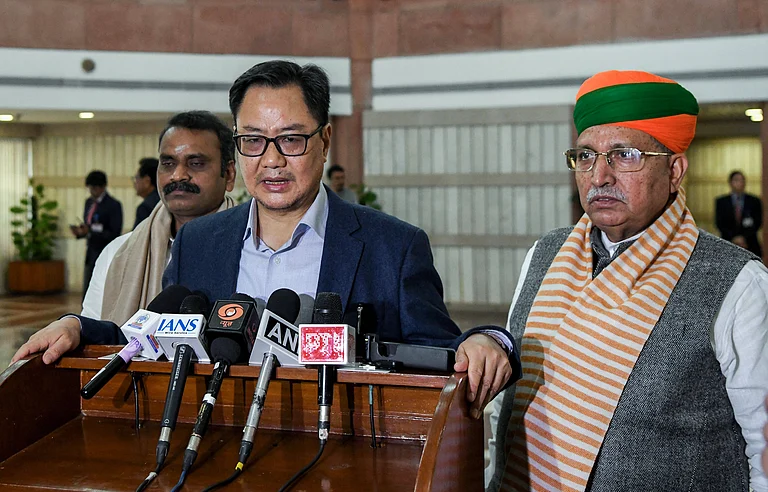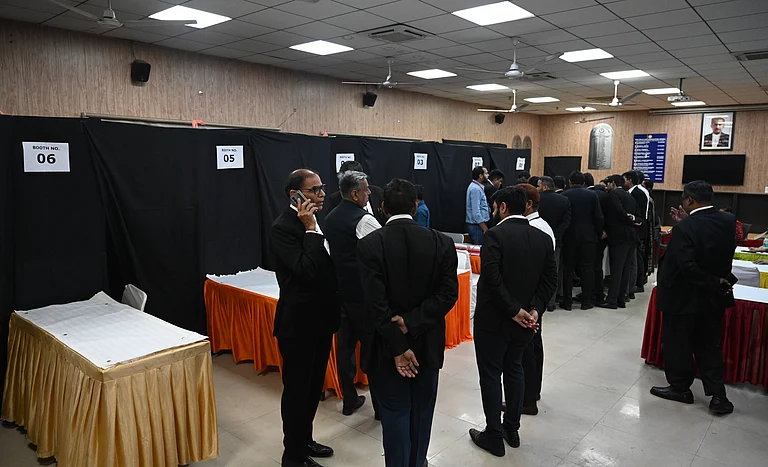It was in 2018 when the then Chief Economic Advisor Arvind Subramaniam posed with a pink-coloured document which was the Economic Survey 2018-19. The aim was to specifically focus on gender issues in the Union Budget. But beyond the pink covers and promises of being ‘pro-women’, women-centric schemes have continued to form only five per cent of the total Union Budget allocations.
The gender budget allocation in the pink budget of 2018 was Rs 121,961 crore – only five percent of the total budget. The numbers have almost stayed similar for subsequent years – with only 4.9 per cent of the previous fiscal’s budget (2023-24) allocated towards the gender component.
Although gender has been a component of the Union Budget since 2005 and successive governments have attempted to incorporate either schemes or measures that are gender-responsive, activists and researchers say that the whole gender-responsive budgeting method adopted by India needs a revisit to achieve the gender equality we are looking for.
Ahead of the presentation of the interim budget 2024-25 by Finance Minister Nirmala Sitharaman, here are some important observations from the previous gender budgets of the present government.
No major changes in gender budget allocation post Covid-19
The gender budget has two parts, one with 100 per cent allocation to women and another with 30 per cent allocation on women related expenditures. For the current financial year 2023–24, 36 ministries and departments were allocated a budget of Rs 2,23,219.75 crore by the government under gender budget, which accounts for just 4.95 per cent of the total union budget.
The (gender budget) system we adhere to is a scaled-down version, in which a distinct evaluation of funds that are entirely or partially designated for women is presented as allocations for women, says Anu Maria Francis, Senior Associate at Centre for Public Policy and Research. This allocation, she adds, typically ranges from 3 to 6 per cent of the total budget and has experienced minimal fluctuations since its inception in 2005.
The same trend was observed in the first budget since Covid-19 pandemic. Although the pandemic had a disproportionate impact on women, with work participation rates collapsing to unimaginably low levels and increasing reports of domestic violence, child marriage, cyber violence and trafficking of women and girls, the gender budget 2021-22 constituted only 4.4 per cent of the total expenditure budget; declining to 4.3 per cent in 2022-23 budget and marginally increasing in last year’s budget.
Gaps in allocation to support prevention of violence against women
The Covid-19 pandemic also enabled a ‘shadow pandemic’ in India – a situation defined by the United Nations: combating violence against women and girls during the COVID-19 crisis. During the first few weeks of lockdown, the National Commission for Women (NCW) reported an uptick in cases of violence against women (from 2,960 cases in 2019 to 5,290 in 2020). Yet, there were massive gaps in allocations to support prevention of violence against women and girls in the years following the first lockdown.
Women-specific allocations for preventing Violence Against Women and Girls (WAWG), including inter-alia schemes like 181-women helpline, One Stop Centre (OSC), Swadhar Greh (Shelter Homes), and Fast Track Special Courts, formed less than 0.07 per cent of the total union budget allocations in 2020-21, according to a report by Oxfam. In the subsequent year’s budget (2021-22), three of these schemes – OSC, women helpline and Mahila police volunteers – were clubbed into a new umbrella scheme called ‘SAMBAL’ scheme.
Allocation for this SAMBAL scheme in 2021 was 10 per cent less than the combined allocations for these schemes in the previous year. Moreover, the All India Democratic Women’s Association (AIDWA) notes that there were virtually no provisions for sportswomen in the 2023-24 budget, whose safety has become a major concern in recent times. 2023 was the year that witnessed protests by the country’s top female wrestlers who accused ex-WFI president and BJP MP Brij Bhushan Singh of sexual harassment.
Decrease in allocations for women’s health, nutrition
The National Health Mission (NHM) – which also includes maternal and child health – saw its allocation reduce from Rs 37,165 crore in 2022-2023 to Rs 36,785 crore in 2023-24. Other nutrition sensitive programmes like PM-Poshan, National Health Mission, Food Subsidy, Mahatma Gandhi National Rural Employment Guarantee Scheme, and National Rural Drinking Water Mission that also cater to women have seen a decline in allocation in 2023 from the previous year’s revised budget, according to a report by Observer Research Foundation (ORF).
Despite making tall claims about providing free food to 80 crore people and extending the term of the PM Garib Kalyan Yojana for one year, the food subsidy has come down by 31 percent, in nominal terms, AIDWA notes. The Food Subsidy programme ensures distribution of foodgrains at a subsidised price through the Targeted Public Distribution System (TPDS).
The transgender question
In the Union Budget 2023, Rs 6 crore were allocated to the SMILE (Support for Marginalised Individuals for Livelihood and Enterprise) programme of the Ministry of Social Justice and Empowerment. The scheme has a sub-scheme focusing on the rehabilitation and welfare of transgender persons. However, multiple media reports have pointed out that the most well-known initiative under the SMILE program, Garima Greh (shelter homes for transgender persons), is in dire condition, with many of these shelters relying on donations and personal contributions.
Researchers say that while gender-responsive budgeting is a laudable effort when implemented in its true sense, solely relying on fiscal allocation will not be enough to attain gender equality. While 2023 witnessed the passage of the Women’s Reservation Bill in Parliament, India still lags behind when it comes to gender equality – ranking 127th of 146 countries on the World Economic Forum’s Global Gender Gap Report 2023. “It is evident that only increasing the provision of funds for women will not be sufficient,” says Francis.






